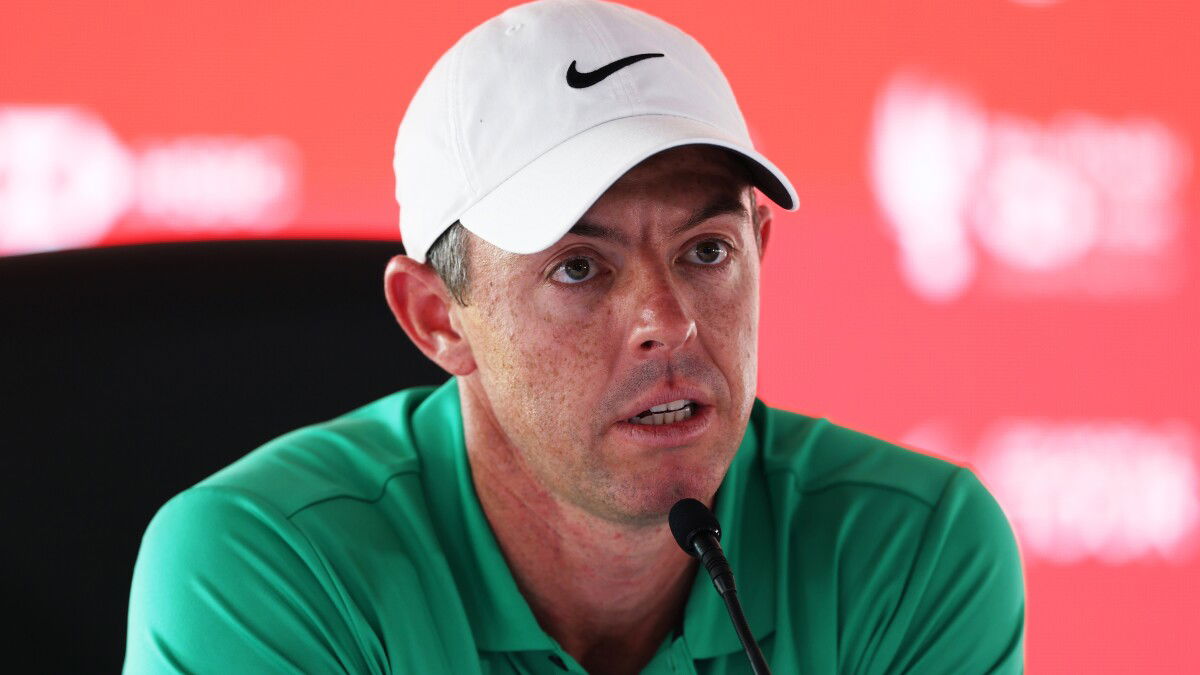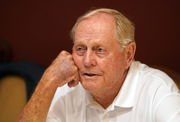
Getty
ABU DHABI, UNITED ARAB EMIRATES – NOVEMBER 06: Rory McIlroy of Northern Ireland speaks in a press conference following the Pro-Am prior to the Abu Dhabi HSBC Championship 2024 at Yas Links Golf Course on November 06, 2024 in Abu Dhabi, United Arab Emirates. (Photo by Richard Heathcote/Getty Images)

Getty
ABU DHABI, UNITED ARAB EMIRATES – NOVEMBER 06: Rory McIlroy of Northern Ireland speaks in a press conference following the Pro-Am prior to the Abu Dhabi HSBC Championship 2024 at Yas Links Golf Course on November 06, 2024 in Abu Dhabi, United Arab Emirates. (Photo by Richard Heathcote/Getty Images)
Early on Tuesday, the PGA Tour announced the schedule for the 2026 season, and it quickly raised eyebrows. And not just for the addition of a new signature event, but for the sheer intensity of the calendar, which packs 35 events into an already demanding stretch for the top players. And one among them, Rory McIlroy, didn’t shy away from sharing his thoughts on the potential challenges of the new calendar.
Watch What’s Trending Now!
Speaking at a press conference on Tuesday, just ahead of the Tour Championship at East Lake, McIlroy was asked to share his thoughts on the new schedule. It features 35 events, nine signature events, with five of them clubbed with four majors in four months, and five in a six-week stretch from the Masters to the PGA. It sounds exhausting to even say it loud, but as McIlroy summed it up, it’s crucial for building the momentum that keeps fans engaged and the sport thriving. “I mean, geez, I think it’s all positive when you have — golf builds through the January, February, March months, and obviously golf gets a huge popularity spike or whatever through Augusta; and then to try to keep that momentum going, keep that momentum going through the next few weeks, through the PGA, U.S. Open, I think it’s a good thing,” McIlroy told the media. But at the same time, the four-time FedEx Cup champion cautioned about the physical and mental toll the packed calendar could take.
“It’s quite a bit of a workload for the players to play that much golf in that stretch, but I think it’s not as if we’re having to travel halfway around the world to do it. These are all pretty easy stops on the East Coast for the most part,” McIlroy admitted. The Masters, RBC Heritage (signature event), the Zurich Classic, the Miami Championship (new signature event), the Truist Championship (signature event), and the PGA Championship will all be played in a row. While most of the stops are on the East Coast, having two major championships and three signature events in just six weeks is quite a stretch.
ADVERTISEMENT
But despite the concerns, McIlroy believes the challenging schedule could ultimately benefit the PGA Tour if players and fans stay engaged. “But I think it’ll be good. It’ll be a good schedule, and I think if the TOUR and the top players get off to a good start, I think that builds momentum for the TOUR, and I think the TOUR can just sort of ride that momentum through that stretch,” he reflected on the long-term motive. Still, the challenge is clear — sustaining peak performance across so many high-stakes tournaments will require not just skill, but serious stamina and resilience.
Next season’s PGA TOUR schedule is here!
2026, we’re ready for you 💪 pic.twitter.com/yRT2iRavba
— PGA TOUR (@PGATOUR) August 19, 2025
Players can pick and choose the events to play from, as McIlroy highlighted — “I’ll always choose the schedule that best fits me, and this year that meant skipping a few signature events. I might skip less next year. I might skip the same amount, I don’t know. The luxury of being a PGA Tour player is we are free to pick and choose our schedule for the most part, and I took advantage of that this year, and I’ll continue to take advantage of that for as long as I can.” But when you have important events packed in two months, skipping some will only result in a dip in rankings and performance for most players. With the addition of the new signature, the secondary concerns about player fatigue and tournament relevance become even more pronounced, highlighting just how challenging the 2026 schedule could be for players.
ADVERTISEMENT
Top Stories
Tour Pro Hit With Brutal 5-Month Punishment Only 11 Days After Celebrating Career Feat

Jack Nicklaus’ Former Company Announces Bankruptcy After $50M Lawsuit Defeat

Nelly Korda Makes Personal Request to LeBron James After He Showed Support for LPGA Pro

Support Pours in as PGA Tour Pro Bursts Into Tears Over Strict New Policy

Another U.S. University Cuts Golf Program Over Budget Concerns

How the 2026 calendar risks burnout for players like Rory McIlroy
The 2026 PGA Tour schedule faces serious criticism for unnecessarily adding a ninth signature event at Trump National Doral, marking the Tour’s return to Miami after a nine-year absence due to sponsorship issues. While the venue’s historic ties to golf are undeniable, this move comes at a steep cost. The new Miami Championship will be sandwiched between other major and signature events, creating an intense stretch between the Masters and the PGA Championship, all packed into just six weeks. This congested lineup places enormous strain on players, forcing them to make tough choices about which events to prioritize, and putting tremendous pressure on regular tournaments already struggling to attract the top-tier players.
ADVERTISEMENT
The addition of another high-profile, high-purse event disrupts the delicate balance of the PGA Tour calendar. Events like the Zurich Classic and Truist Championship risk losing star players who might skip these tournaments to prepare for majors or more lucrative competitions. Even the top players aren’t swayed by the extra prize money, as many have already skipped signature events, like McIlroy’s absence at the 2025 Memorial. Instead of trimming the schedule to reduce burnout and protect smaller tournaments, the Tour is expanding a calendar that could put unnecessary pressure on players, possibly leading to a decline in performance and risk of injury.
ADVERTISEMENT
ADVERTISEMENT
ADVERTISEMENT

